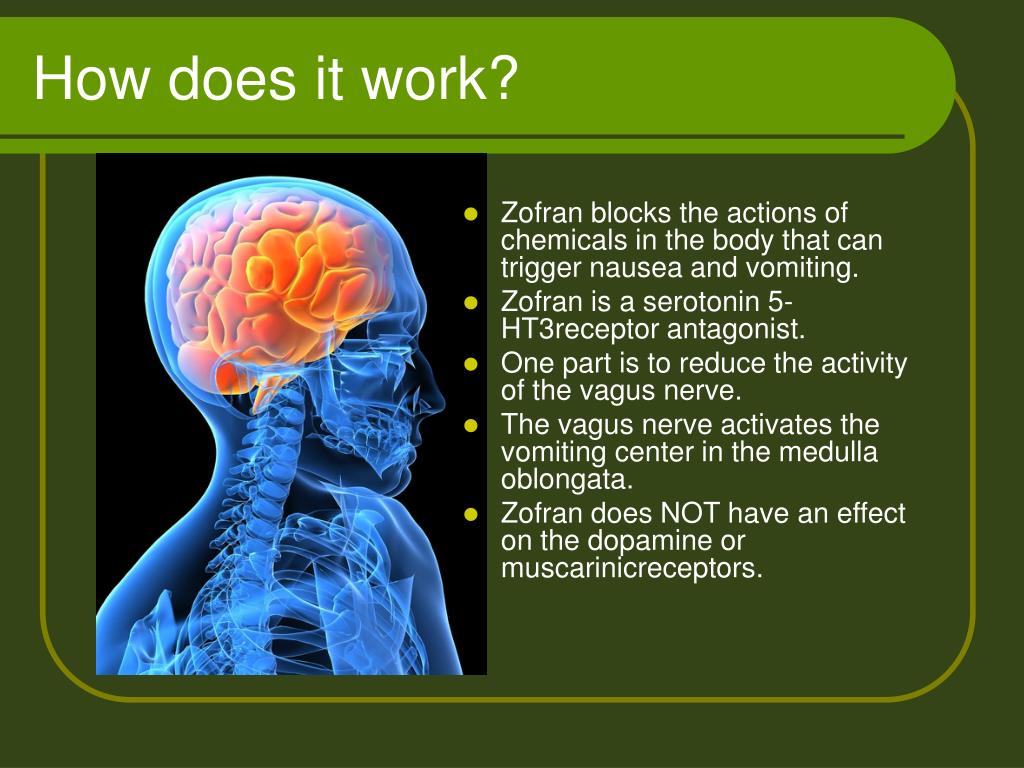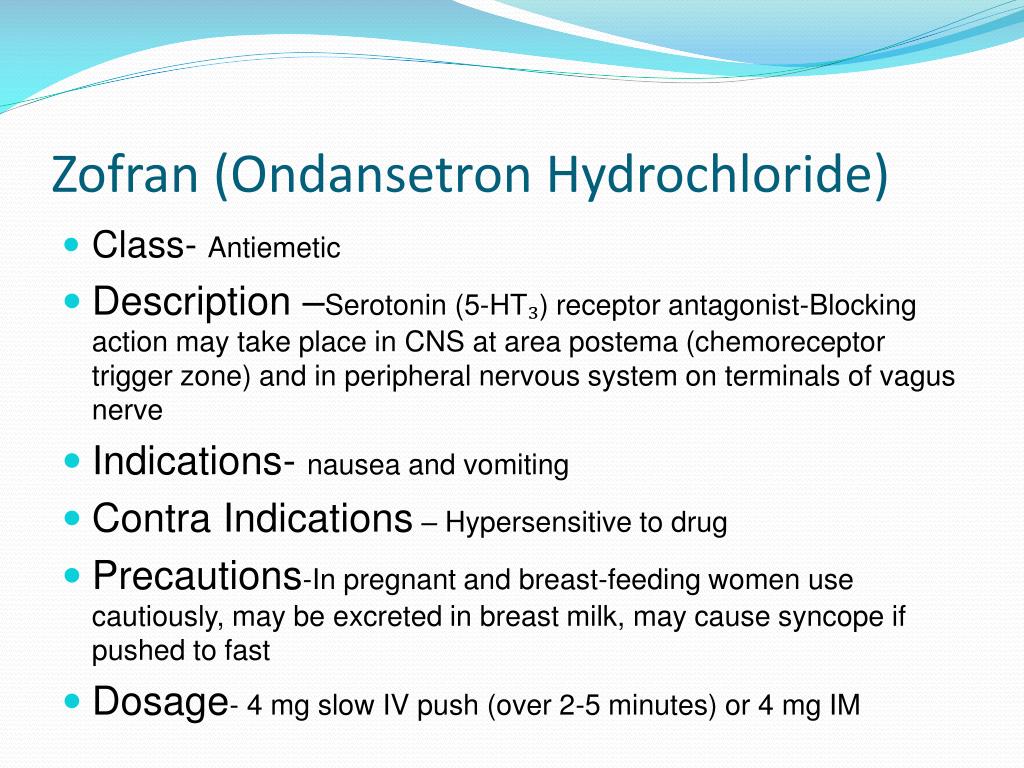Let’s face it, folks—nausea and vomiting can hit you like a freight train, and when they do, you need something that really works. That’s where Zofran comes in. You might’ve heard about it from your doc or even used it yourself, but have you ever wondered, “How does Zofran work?” Well, buckle up because we’re about to dive deep into the science behind this game-changing medication. Whether you’re dealing with chemo-induced nausea, post-op queasiness, or motion sickness, Zofran’s got your back—and we’re here to explain why.
Now, before we get all science-y on you, let’s talk about what Zofran actually is. Zofran, or ondansetron to give it its fancy scientific name, is a prescription drug designed to combat nausea and vomiting. It’s not just any old pill; it’s a targeted solution that works by blocking specific receptors in your brain and gut. But how exactly does it pull off this miraculous feat? Stick around, and we’ll break it down for you.
Why should you care about Zofran? Because knowledge is power, my friend. Understanding how it works can help you make informed decisions about your health. Plus, if you’re someone who’s dealing with conditions like chemotherapy side effects, post-surgical nausea, or even seasickness, knowing the ins and outs of Zofran can be a game-changer. So, let’s get started!
Read also:Missy Peregrym Nude The Truth Behind The Clickbait And The Real Story
Table of Contents
- What is Zofran?
- The Mechanism of Action: How Does Zofran Work?
- Common Uses of Zofran
- Benefits of Using Zofran
- Potential Side Effects
- Dosage Guidelines
- Zofran vs. Other Antiemetics
- Clinical Studies and Evidence
- Who Can Use Zofran?
- Wrapping It Up: Final Thoughts
What is Zofran?
Alright, let’s start with the basics. Zofran, or ondansetron, is a serotonin 5-HT3 receptor antagonist. Don’t let those big words scare you—it just means that Zofran blocks certain receptors in your brain and gut that are responsible for triggering nausea and vomiting. These receptors are like little switches, and when they’re flipped, your body gets the signal to hurl. Zofran steps in and flips the switch back to "off," keeping everything under control.
Key Points About Zofran
- Zofran is FDA-approved for treating nausea and vomiting.
- It’s available in various forms, including tablets, oral solutions, and injections.
- It’s widely used in hospitals and clinics around the world.
Now, you might be wondering, “Why is Zofran so popular?” Well, it’s because it’s effective, reliable, and has been around for decades. Doctors trust it, and patients swear by it. But don’t just take our word for it—let’s break down exactly how it works.
The Mechanism of Action: How Does Zofran Work?
Here’s where things get interesting. Zofran works by targeting serotonin 5-HT3 receptors. Serotonin is a neurotransmitter that plays a big role in regulating mood, but it also has a hand in triggering nausea and vomiting. When you’re feeling queasy, it’s often because serotonin is binding to these 5-HT3 receptors, sending signals to your brain that it’s time to empty your stomach. Zofran steps in and blocks those receptors, preventing the signal from getting through.
How Does Zofran Target the Right Receptors?
- It binds specifically to 5-HT3 receptors in the brain and gut.
- It doesn’t affect other serotonin receptors, which minimizes side effects.
- It works quickly, often providing relief within an hour of taking it.
But wait, there’s more! Zofran also has a knack for crossing the blood-brain barrier, which means it can tackle nausea at its source—right in the brainstem. This makes it especially effective for conditions like chemotherapy-induced nausea, where the brain is heavily involved in the vomiting process.
Common Uses of Zofran
So, what exactly is Zofran used for? Let’s break it down:
Primary Uses
- Chemotherapy-Induced Nausea: Zofran is a go-to medication for cancer patients undergoing chemo. It helps keep nausea and vomiting in check, allowing patients to focus on recovery.
- Post-Operative Nausea: After surgery, many people experience nausea and vomiting. Zofran is often administered in hospitals to prevent this from happening.
- Motion Sickness: Whether you’re on a boat, in a car, or on a plane, Zofran can help calm your stomach and keep motion sickness at bay.
There’s also evidence suggesting that Zofran can be used for other conditions, like morning sickness during pregnancy. However, this use is still being studied, so always consult your doctor before using it for off-label purposes.
Read also:Annabel Ohagan The Rising Star Redefining Success In The Modern World
Benefits of Using Zofran
Let’s talk about why Zofran is such a rockstar in the world of antiemetics. Here are some of the top benefits:
Why People Love Zofran
- It’s highly effective at stopping nausea and vomiting.
- It’s available in multiple forms, making it easy to take.
- It has a relatively low risk of side effects compared to other medications.
- It’s been around for decades, so doctors have a ton of experience with it.
But here’s the kicker: Zofran doesn’t just mask symptoms—it gets to the root of the problem. By blocking those pesky 5-HT3 receptors, it stops nausea before it even starts. That’s why it’s such a popular choice among healthcare professionals.
Potential Side Effects
Now, no medication is perfect, and Zofran is no exception. While it’s generally well-tolerated, there are some side effects to be aware of. Most of them are mild, but it’s always good to know what to look out for.
Common Side Effects
- Headaches
- Dizziness
- Constipation
- Fatigue
In rare cases, Zofran can cause more serious side effects, like heart rhythm problems or allergic reactions. That’s why it’s crucial to talk to your doctor before starting any new medication. They’ll weigh the benefits against the risks and help you make an informed decision.
Dosage Guidelines
Alright, let’s talk about how much Zofran you should take. Dosage guidelines vary depending on the condition being treated and the patient’s individual needs. Here’s a quick breakdown:
Typical Dosages
- Chemotherapy-Induced Nausea: 8 mg taken 30 minutes before chemo, followed by 8 mg every 12 hours for up to 3 days.
- Post-Operative Nausea: A single dose of 4 mg administered before surgery.
- Motion Sickness: 8 mg taken 1 hour before travel, followed by 8 mg every 12 hours if needed.
Always follow your doctor’s instructions when it comes to dosage. Taking too much Zofran can lead to serious side effects, so it’s important to stick to the prescribed amount.
Zofran vs. Other Antiemetics
There are plenty of antiemetic medications out there, so how does Zofran stack up against the competition? Let’s compare it to some of the other big players in the field:
How Zofran Compares
- Metoclopramide: While effective, metoclopramide has a higher risk of side effects, like tardive dyskinesia.
- Dexamethasone: A steroid that’s often used in combination with Zofran for chemo patients. It’s great for reducing inflammation but can have long-term side effects.
- Prochlorperazine: Another potent antiemetic, but it can cause sedation and extrapyramidal symptoms.
What sets Zofran apart is its targeted mechanism of action and relatively low risk of side effects. It’s like the Goldilocks of antiemetics—not too strong, not too weak, just right.
Clinical Studies and Evidence
Don’t just take our word for it—there’s plenty of scientific evidence backing up Zofran’s effectiveness. Countless clinical studies have shown that it significantly reduces nausea and vomiting in a variety of settings. For example, a study published in the Journal of Clinical Oncology found that Zofran was highly effective in preventing chemo-induced nausea in cancer patients.
Another study conducted in post-operative patients showed that Zofran reduced the incidence of nausea and vomiting by over 50%. These results aren’t surprising when you consider how Zofran works—it’s all about blocking those 5-HT3 receptors and stopping the problem at its source.
Who Can Use Zofran?
Zofran is generally safe for most people, but there are some groups who should use caution. Here’s a quick rundown:
Who Should Use Zofran?
- Adults and children over 4 years old.
- Cancer patients undergoing chemotherapy.
- Patients recovering from surgery.
- Travelers prone to motion sickness.
Who Should Be Cautious?
- Pregnant women (consult your doctor first).
- People with heart conditions or a history of heart rhythm problems.
- Individuals with liver or kidney issues.
As always, it’s best to talk to your healthcare provider before starting any new medication. They’ll help you determine if Zofran is right for you.
Wrapping It Up: Final Thoughts
So, there you have it—a deep dive into the world of Zofran and how it works. Whether you’re dealing with chemo-induced nausea, post-op queasiness, or motion sickness, Zofran’s got your back. By targeting those serotonin 5-HT3 receptors, it stops nausea before it even starts, providing much-needed relief for millions of people around the world.
But remember, folks—while Zofran is a powerful tool, it’s not a magic bullet. Always follow your doctor’s instructions and report any side effects right away. And if you’re considering using Zofran for off-label purposes, make sure to do your research and consult with a healthcare professional.
Now, it’s your turn! Have you ever used Zofran? What was your experience like? Drop a comment below and let us know. And if you found this article helpful, don’t forget to share it with your friends and family. Stay healthy, stay informed, and keep on crushing life, one nausea-free day at a time!


